The mission to create the first "artificial solar eclipse" in history.
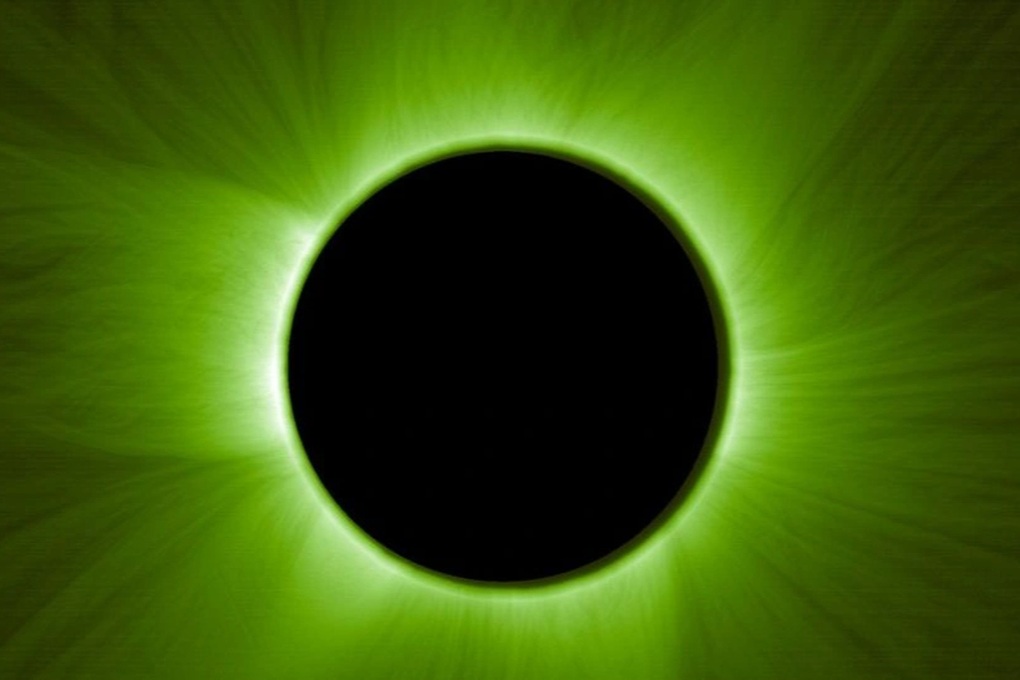
The Sun's inner corona appears green in visible light, as captured on May 23rd by the ASPIICS telescope on board Proba-3 (Photo: ESA).
It was created by two satellites operating in sync in space as part of the Proba-3 mission.
Proba-3 allows humans to create artificial solar eclipses periodically every 19.6 hours, instead of waiting 360 years for a natural total solar eclipse at the same location.
This was the first time humans had deliberately created an event similar to a total solar eclipse, with the aim of studying the corona, which is also the outermost and most mysterious layer of the Sun's atmosphere.
The Proba-3 mission, launched by ESA from the Satish Dhawan Space Centre (India) on December 5th, consists of two satellites. One satellite acts as an "artificial moon" tasked with obscuring the Sun, and the other carries the ASPIICS telescope, pointed directly at the eclipsed region for observation.
On May 23rd, during their first test flight, the two satellites aligned with millimeter precision at a distance of 150 meters, producing unprecedentedly clear images of the Sun's corona.
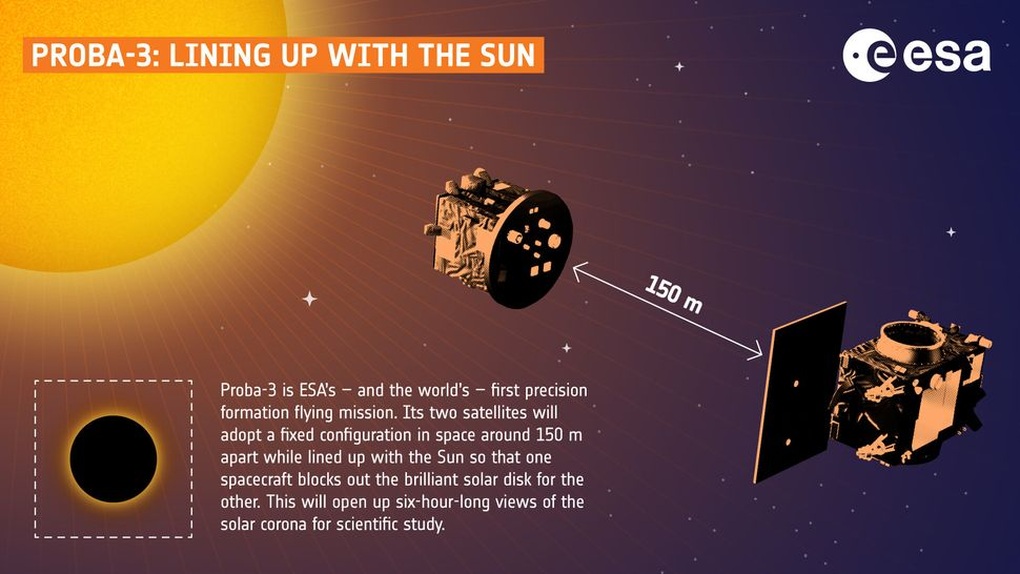
The method used by the Proba-3 mission to create an "artificial solar eclipse" (Photo: ESA).
According to Space , Proba-3 is the world's first precisely formed satellite mission, with an elliptical orbit at a perigee of 600 km and an apogee of 60,000 km. The formation is only achieved when the two satellites are at their apogee (where gravity, magnetic fields, and atmospheric drag are minimal), maximizing fuel efficiency.
There, the occulting satellite, with a diameter of 1.4 meters, cast a shadow of only 8 cm on the observation point of the other satellite. This marks an accuracy that ESA calls "extraordinary".
Another noteworthy point is that the "man-made eclipse" images were created from three frames with different exposure times, which were then processed and combined by scientists at the Royal Observatory of Belgium to recreate the entire scene.
A new era for observing and forecasting space weather.
The solar corona is known to be the outermost part of the Sun's atmosphere, with temperatures reaching over 2 million degrees Fahrenheit – 200 times hotter than the Sun's surface, but the reason for this extremely high temperature remains a mystery.
This is also where the solar wind and coronal mass ejections (CMEs) originate – factors that can seriously affect communication systems, satellites, and power grids on Earth.
Studying the solar corona under normal conditions is inherently extremely difficult, because the Sun's disk is about 1 million times brighter than the atmosphere.
To do this, devices called coronagraphs are used to block sunlight in order to observe the solar corona. However, when placed on the ground, they are strongly affected by the atmosphere, causing significant interference.
Therefore, coronagraph systems operating in space, such as Proba-3, offer a significant advantage.
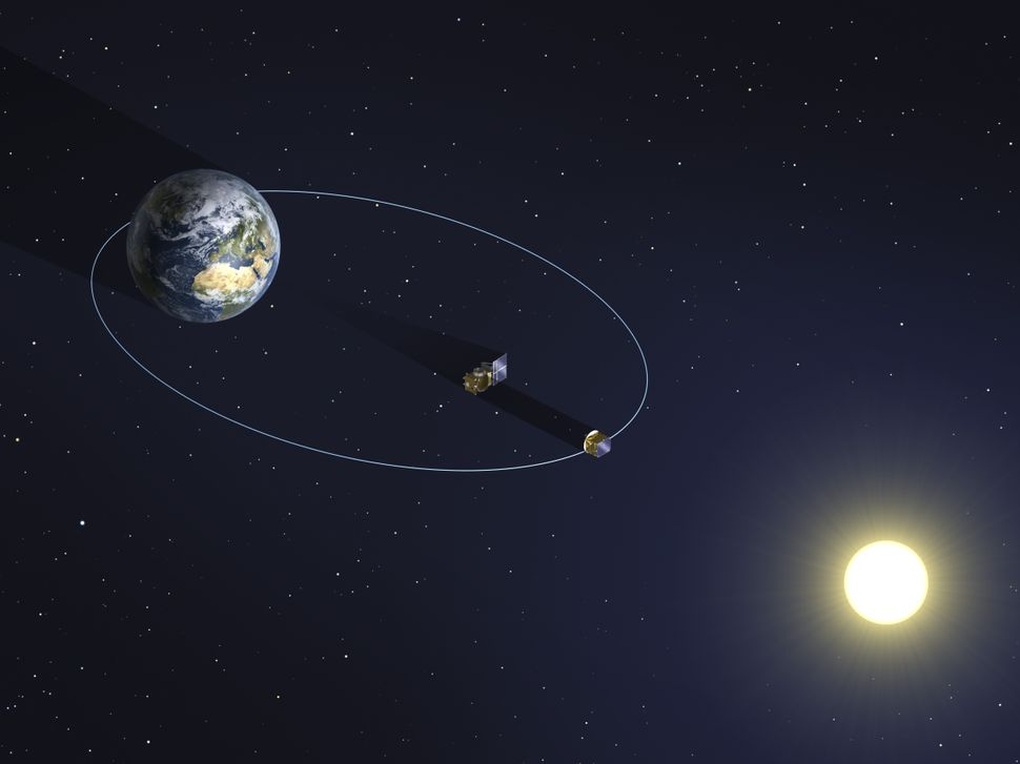
The Proba-3 satellite pair will have an elliptical orbit, flying around Earth (Image: ESA).
According to Andrei Zhukov, the lead researcher of the ASPIICS project, the images sent back by Proba-3 not only show the detailed structure of the solar corona, but also record cold protrusions. This is a phenomenon of cold plasma with a temperature of about 10,000 degrees Celsius standing out against a background of hot plasma at millions of degrees.
These are also features that are only observable during total solar eclipses, and can now be studied more regularly thanks to Proba-3.
In fact, the idea of creating an artificial solar eclipse was first realized in 1975 during the Apollo-Soyuz experiment between the US and the Soviet Union. However, the technology at the time was limited, and the images obtained were very modest.
With Proba-3, for the first time, humans can create artificial, periodic solar eclipses, estimated to occur after just 19.6 hours in orbit, instead of having to wait an average of over 360 years to witness a total solar eclipse at a specific location on Earth.
Source: https://dantri.com.vn/khoa-hoc/hinh-anh-dau-tien-ve-nhat-thuc-toan-phan-nhan-tao-20250617180230231.htm


![[Photo] Prime Minister Pham Minh Chinh receives Lao Minister of Education and Sports Thongsalith Mangnormek](/_next/image?url=https%3A%2F%2Fvphoto.vietnam.vn%2Fthumb%2F1200x675%2Fvietnam%2Fresource%2FIMAGE%2F2025%2F12%2F16%2F1765876834721_dsc-7519-jpg.webp&w=3840&q=75)
![[Image] Leaked images ahead of the 2025 Community Action Awards gala.](/_next/image?url=https%3A%2F%2Fvphoto.vietnam.vn%2Fthumb%2F1200x675%2Fvietnam%2Fresource%2FIMAGE%2F2025%2F12%2F16%2F1765882828720_ndo_br_thiet-ke-chua-co-ten-45-png.webp&w=3840&q=75)
![[Photo] Prime Minister Pham Minh Chinh receives the Governor of Tochigi Province (Japan)](/_next/image?url=https%3A%2F%2Fvphoto.vietnam.vn%2Fthumb%2F1200x675%2Fvietnam%2Fresource%2FIMAGE%2F2025%2F12%2F16%2F1765892133176_dsc-8082-6425-jpg.webp&w=3840&q=75)
![[Live] 2025 Community Action Awards Gala](/_next/image?url=https%3A%2F%2Fvphoto.vietnam.vn%2Fthumb%2F1200x675%2Fvietnam%2Fresource%2FIMAGE%2F2025%2F12%2F16%2F1765899631650_ndo_tr_z7334013144784-9f9fe10a6d63584c85aff40f2957c250-jpg.webp&w=3840&q=75)


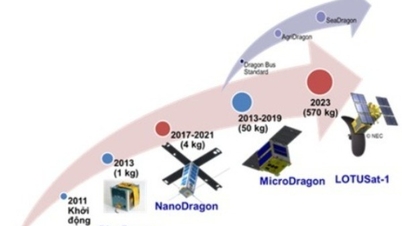

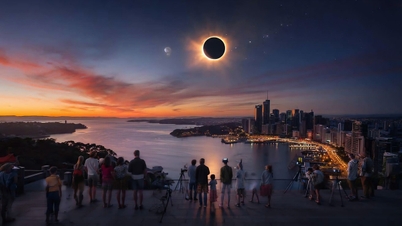

























































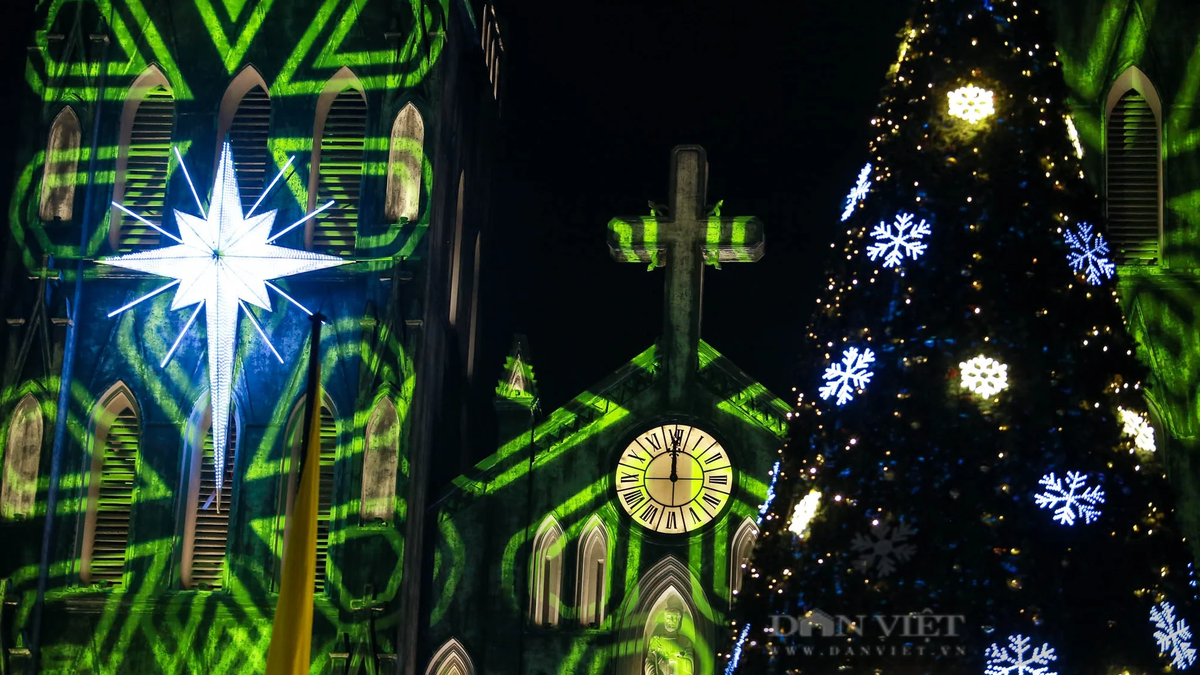










![[Live] Closing Ceremony and Award Presentation for the "Impressive Vietnam Tourism" Video/Clip Creation Contest 2025](https://vphoto.vietnam.vn/thumb/402x226/vietnam/resource/IMAGE/2025/12/17/1765974650260_z7273498850699-00d2fd6b0972cb39494cfa2559bf85ac-1765959338756946072104-627-0-1338-1138-crop-1765959347256801551121.jpeg)
































Comment (0)